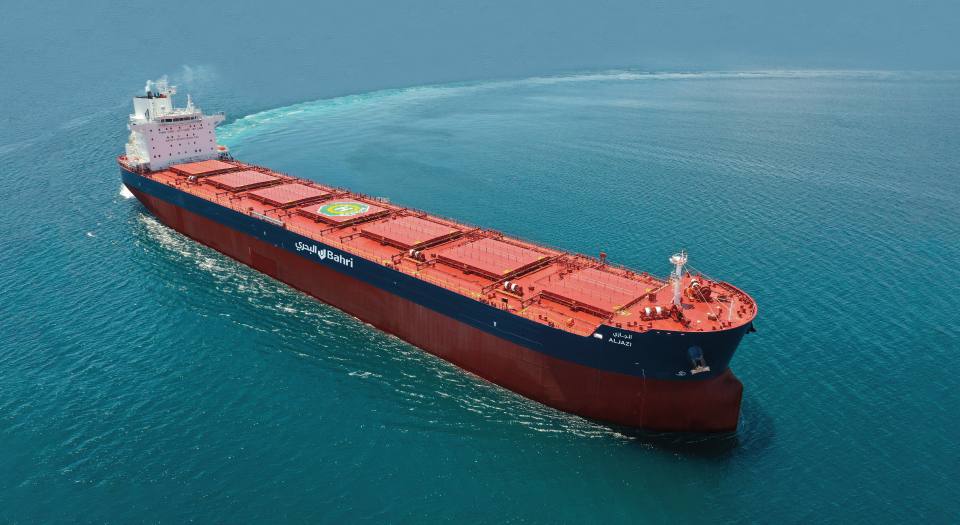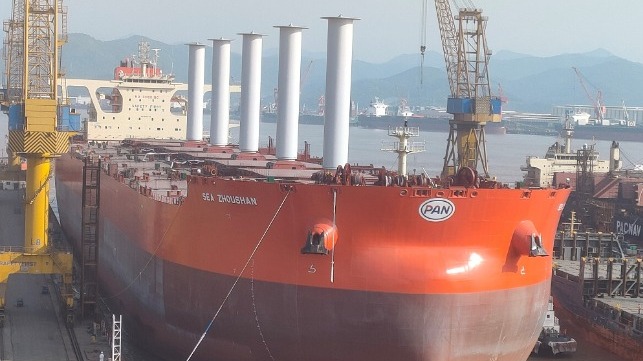FrankJScott
Dołączył: 28 Kwi 2020
Posty: 197
Skąd: Best Mastiff Breeds
|
 Wysłany: Pią Gru 10, 2021 23:02 Temat postu: Updated Bulk Ship Tips Wysłany: Pią Gru 10, 2021 23:02 Temat postu: Updated Bulk Ship Tips |
 |
|
The Main Purpose and Function of Seagoing Bulk Carriers
The operations of seagoing bulk carriers was fraught with dangers. Careful planning and exercising due precautions for all shipboard matters are important . This site is an instant reference to the international shipping industry . It also offers guidance and details on loading and discharging bulk cargo types. These limits are set by the classification societies. It is essential to minimize the likelihood of over-stressing the structure of the ship and complying with all essential security measures to ensure a safe sea voyage. Our detail pages contain various bulk carrier related topics that might be useful for those working onboard and those working on shore at the terminal.
General characteristics of seagoing bulk vessels
Bulk carriers, also known as single-deck vessels that have top-side tanks or hopper side tanks within cargo spaces, are made to transport bulk cargo of a single commodity. Bulk cargo that is solid refers to any material, other than gas or liquid, consisting of a combination of granules, particles, or any other large chunk of material that is generally similar in composition. It is loaded directly into cargo spaces of a ship with no immediate containment. Dry cargo comprises sugar, bulk grains, and even minerals. Bulk carrier, as it is understood in its broadest meaning can refer to any vessel which are designed specifically to carry bulk cargo such as liquid cargo or solid cargo. Tankers could also be included. In the normal context, the term is typically used to refer to vessels that carry bulk cargoes consisting of solid items, including grains and other agricultural commodities and minerals items like coal ore, stone, or even coal on one or several travel legs. Have a look at this time charter url for more.

What Is A Bulk Ship?
"A ship which is intended primarily to carry dry cargo in bulk, including such types as ore carriers and combination carriers"
Carrying capacities range from 3,000 to 300,000.
-Average speed of 12 15 knots
-Single deck ships, ie no tweendecks
Carriers with medium to small size bulk (carrying capacities between 40 and 60,000 tonnes) typically have equipment for handling cargo. However, larger vessels can use docks to load and unload.
Cargo holds that are big are free of obstructions and have bigger hatch sizes for ease of loading and unloading.
The ballast holds are a typical feature of bulk carriers. It can be utilized on ballast voyages for improved stability. For partially ballasting, one or two additional holds might be allowed, however they only at port.
They are available in single pull or stacking (piggyback), type steel hatch covers.
Four types of ballast tanks:
Sloping topside wing tanks
Sloping bottom side-wing tanks
Double bottom tanks
Peak and after peak ballast water tank.
What is solid bulk cargo? Solid bulk cargo is anything that is not gas or liquids that is made up of grains, particles or larger pieces that can be placed directly into the cargo area without the need for extra containment. There are many cargoes being carried by bulk carriers. These include food items and minerals that may react to each other or in conjunction with water sources. A surveyor is often required to look over the area and determine if it's suitable to be loaded. To avoid contamination it is crucial that any leftovers left by a previous cargo be taken away. The majority of damage to bulk cargo is due to water. To prevent water ingress hatch covers should be watertight. All fittings (ladders or pipe guards as well bilge covers) inside the container should be inspected. All fittings within the hold (pipe guards and bilge covers.) should be inspected to ensure they are in proper condition and securely fastened. They can cause significant wear and tear to conveyor belts, which could cause delays. If the equipment is accidentally discharged with cargo, the ship might be held liable. Check out this handymax bulk carrier specialist for more.

Bulk Carrier or Bulker? A vessel that is designed to transport dry cargo, loaded onto the vessel, with no container other than the ship's borders and is distinct from the bulk carrier that is liquid or tanker. The conventional bulk carrier is built with a single deck and single skin. Bulk carriers can transport any type of bulk cargo, from heavy ore to lighter grains, with a maximum weight. The loading, transportation and finally the discharge of dry bulk cargo is not as simple or straight forward as most people would imagine.
Carrier for bulk materials without gear
A lot of bulk cargoes have dangers and can change their properties upon passage. Incorrect loading can cause damage to the ship. The ship may bend when it is loaded to its maximum forward hold. This is known as "stress?" It can result in dangerous situations on the sea when there is severe weather. Other cargoes may also be affected by residues from prior cargoes. Certain bulk cargoes are susceptible to damage from water. cement power. It can be difficult to confirm the cargoes that are loaded or discharged. These factors can have serious consequences for safe bulk cargo transport. Discharging bulk cargo using? conveyor belts and similar systems are not monitored and monitored the bulk cargoes will form the shape of a cone. The angle at which this cone forms is called the angle, or repose'. It varies for each type of cargo. Iron ore cargoes will form a steep-angled cone while cargoes that flow freely will make a cone that is shallow. Low angles of repose could result in cargo shifting during the course of transport. Bulldozers might need to be used for some items to distribute the load over the sides of the hold when the cargo is near to completion. Dry bulk carriers typically have to utilize facilities at the shore to load cargo and discharge it. However, some bulk carriers have self-unloading facilities like conveyors beneath cargo holds or cranes that go up deck. |
|





